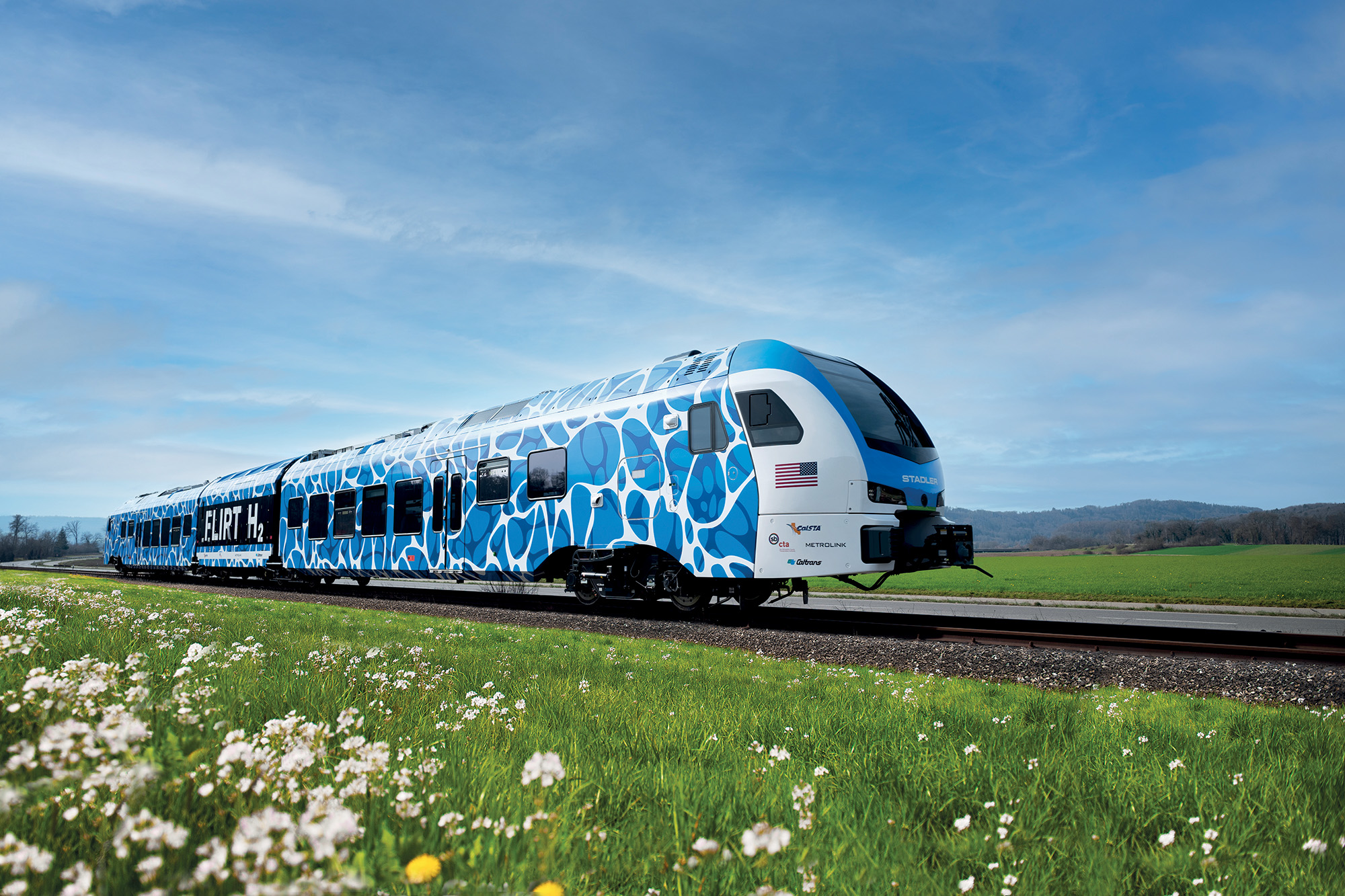When the foundation stone for today’s Stadler Rail was laid in 1942, the company already had electric locomotives in its portfolio. Since then, Stadler has become a global supplier of rail vehicles and locomotives for long-distance, regional and urban transport. The listed group’s portfolio also contains a comprehensive range of service and signalling solutions. The company has approximately 13,500 employees working at 15 production sites and around 80 service locations, and 11,000 of its rail vehicles are currently in use in 43 countries around the world.
In Switzerland, train and tram lines are practically all fully electrified. In many other countries, however, trains are not driven by electricity; instead, they continue to be driven along numerous routes by diesel locomotives or multiple units. In recent years, Stadler has developed climate-friendly drives for these that do not consume fossil fuels.
The company’s solutions include trains that are supplied with electricity from a battery rather than from overhead lines. At the end of 2021, one of Stadler’s FLIRT (Fast Light Intercity and Regional Train) multiple units covered 224 kilometres entirely under battery power, earning the company a Guinness World Record. Since then, it has received orders for well over a hundred battery-powered FLIRT Akkus.
A second innovation has been in service with the Southern Californian railway company SBCTA since 2024. This, too, is a FLIRT; in this case, though, its power supply is hydrogen (H2) based. The hydrogen is converted into electricity by a fuel cell without releasing any harmful emissions. Like the battery-electric train, the FLIRT H2 is fossil-fuel free, as long as the battery power or hydrogen comes from renewable sources, and can directly replace diesel trains.
The global market for rail transport is expected to show annual growth rates of around 3.5 percent for the next few years. Stadler is relying on digitisation to help it hold its own in this fiercely competitive market. The increasing automation of driving operations means rail capacities can be better utilised and transport capacities increased. Digital solutions also improve sustainability in individual trains. For example, by optimising acceleration and braking processes, energy savings of up to 20 per cent can be achieved.

Stadler Rail AG